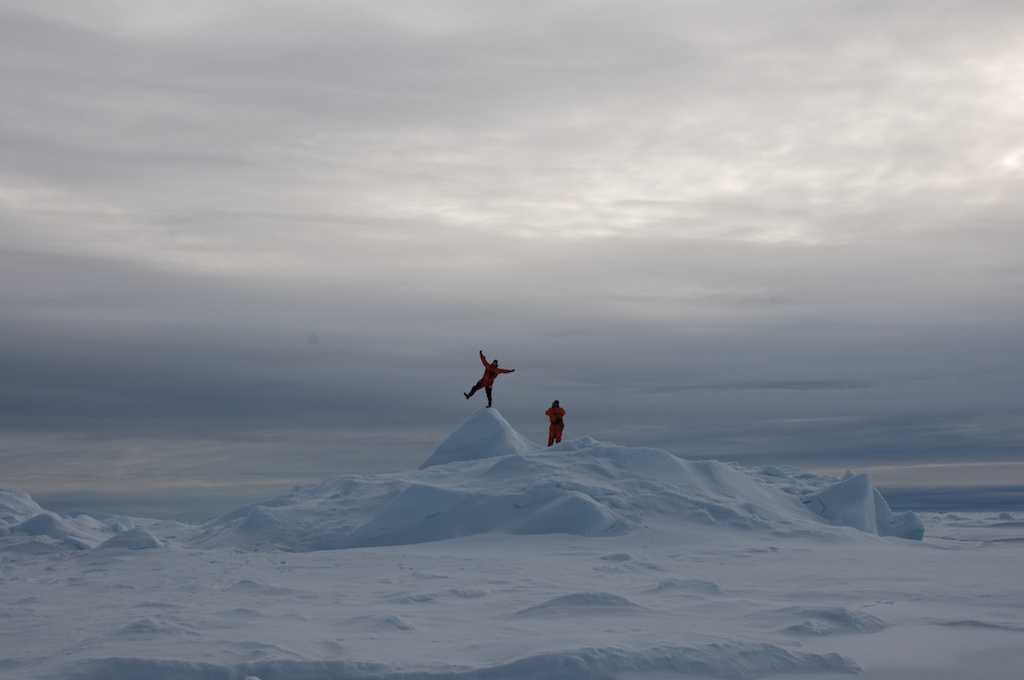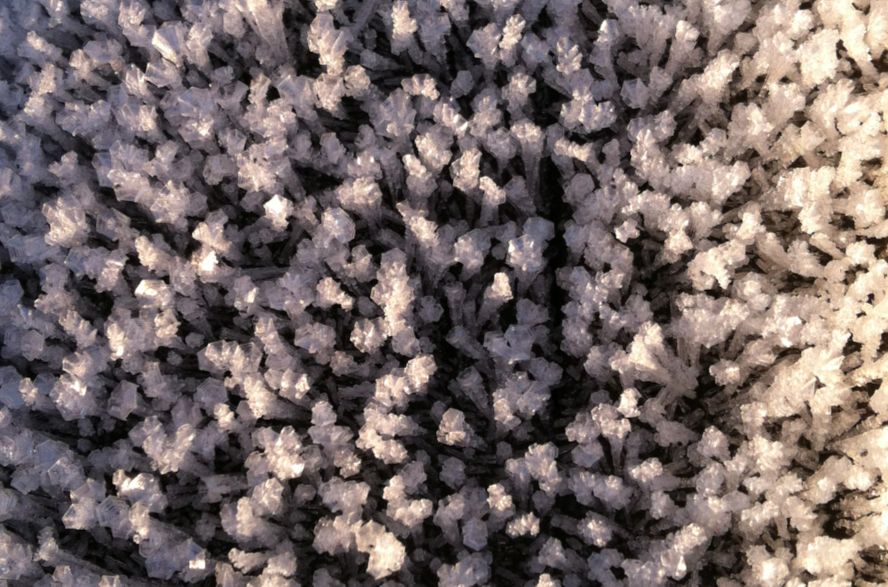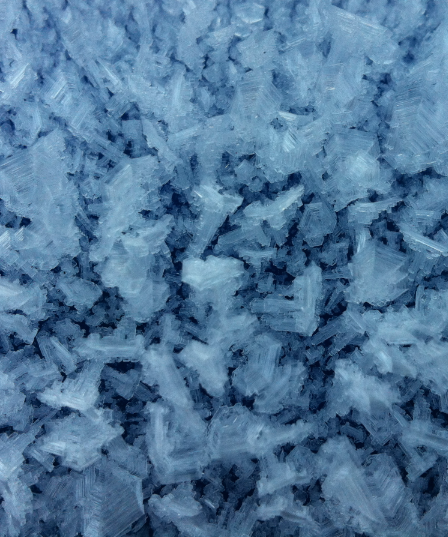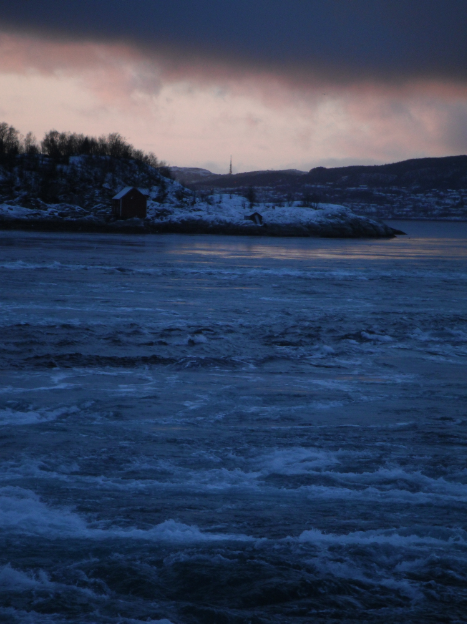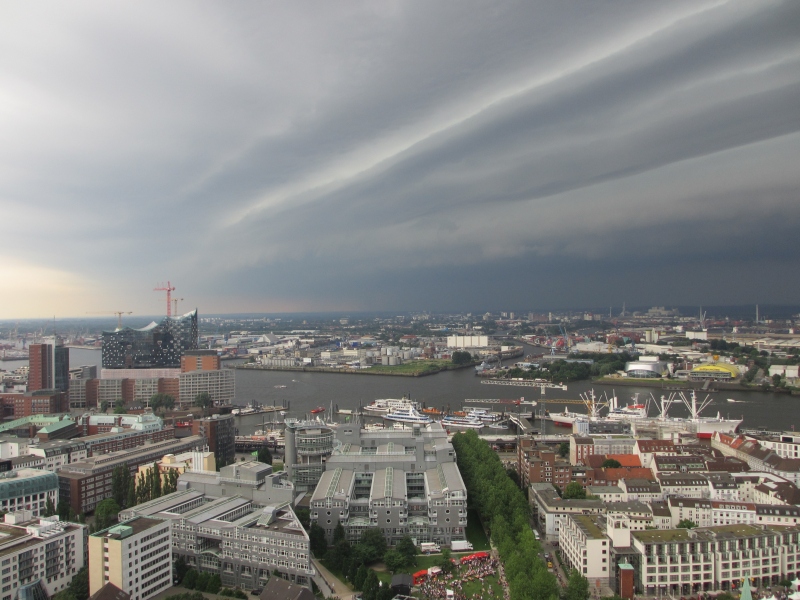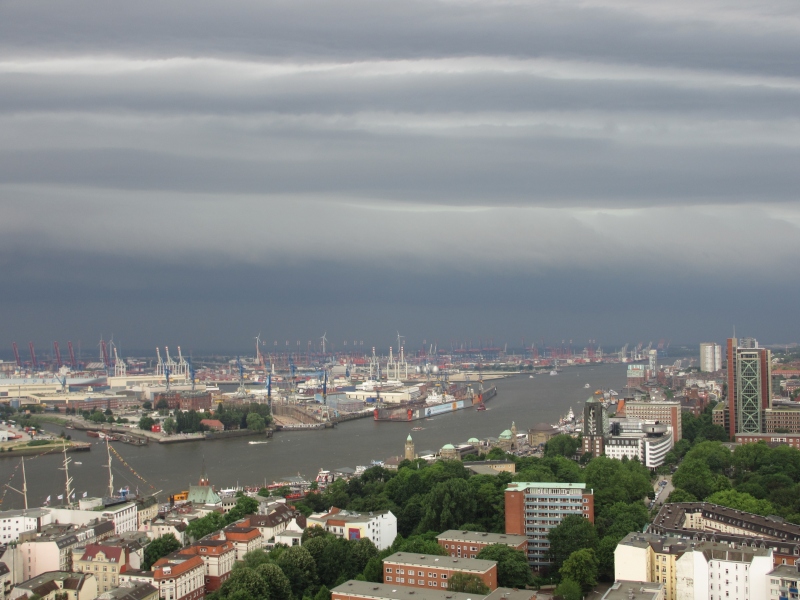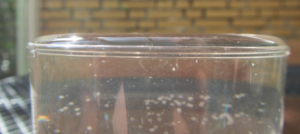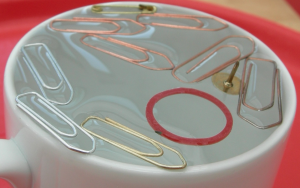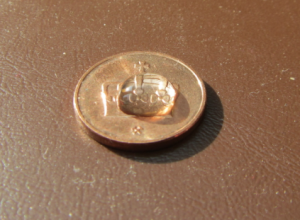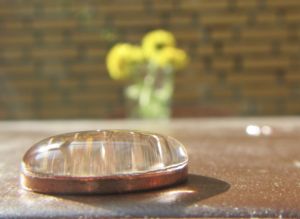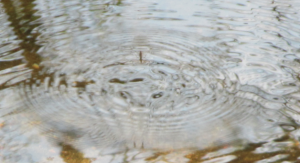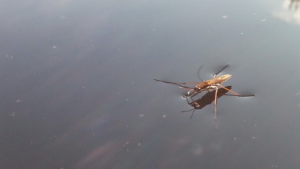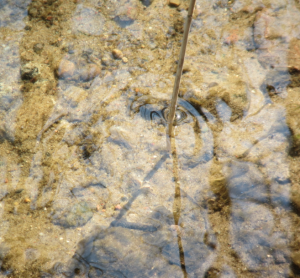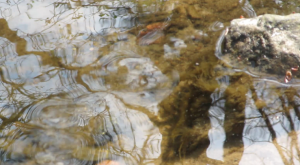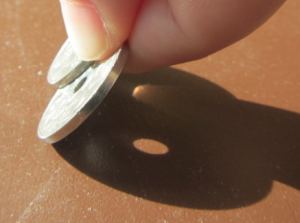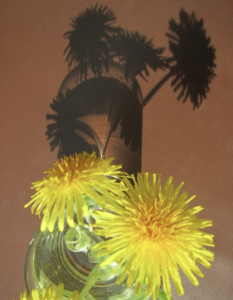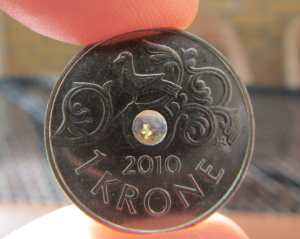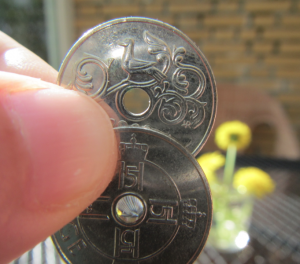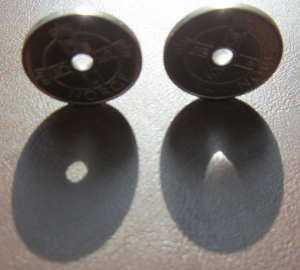Exciting guest post on a newly published paper by Angelika H. H. Renner.
I’ve met Angelika on a cruise in the Antarctic Circumpolar Current a long time ago where we worked on an instrument together and created an advent calendar to keep up everybody’s morale during the second month of the cruise before flying home on christmas eve, and we’ve since gone white(ish) water kayaking, hiking in the norwegian mountains, visited each other’s institutes, helped each other out in research and teaching crises (mainly Geli helping me out, to be honest ;-), and we are planning an exciting project together. Angelika and coauthors recently published the paper “Evidence of Arctic sea ice thinning from direct observations“. In today’s post, Angelika writes about how the observations that went into the paper were obtained, and I am excited to share her story – and her amazing photos – with all of you.
—
There’s been so much liquid water on Mirjam’s blog lately, I was happy to take her invitation for a guest blog to bring back some of the most amazing, interesting, and beautiful variation of sea water: sea ice!
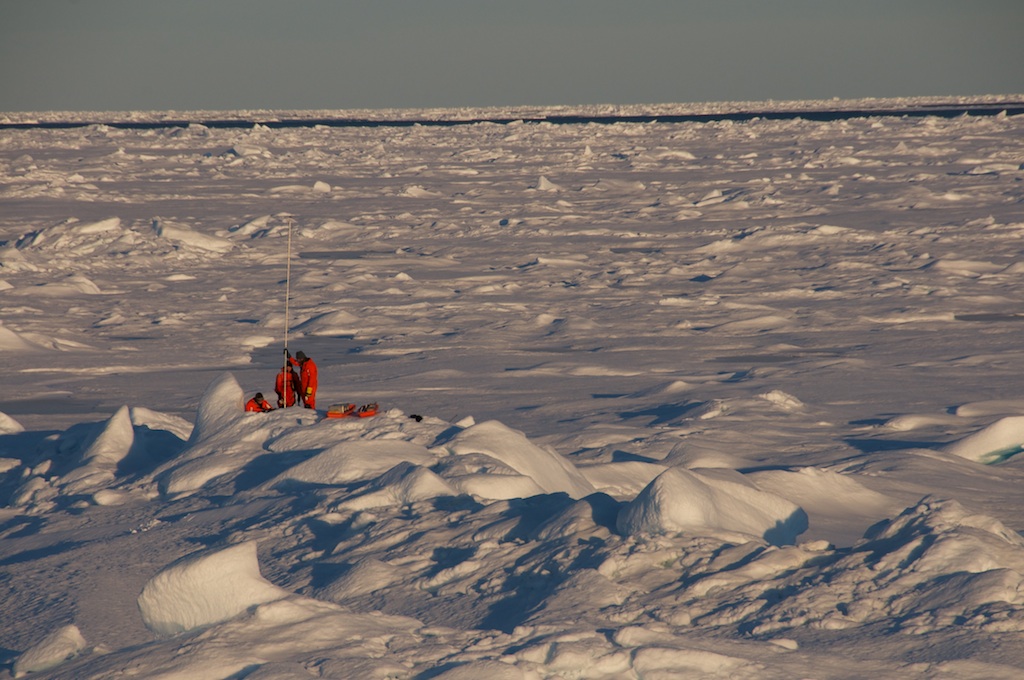
Sea ice comes in various shapes, from very flat, smooth, and thin sheets of newly formed ice to huge ridges several tens of meters thick. Assessing the thickness of the sea ice cover in the Arctic remains one of the biggest challenges in sea ice research. Luckily, methods become more refined, and numbers derived from satellite measurements become more accurate and reliable, but they don’t cover a long enough period yet to say much about long-term changes.
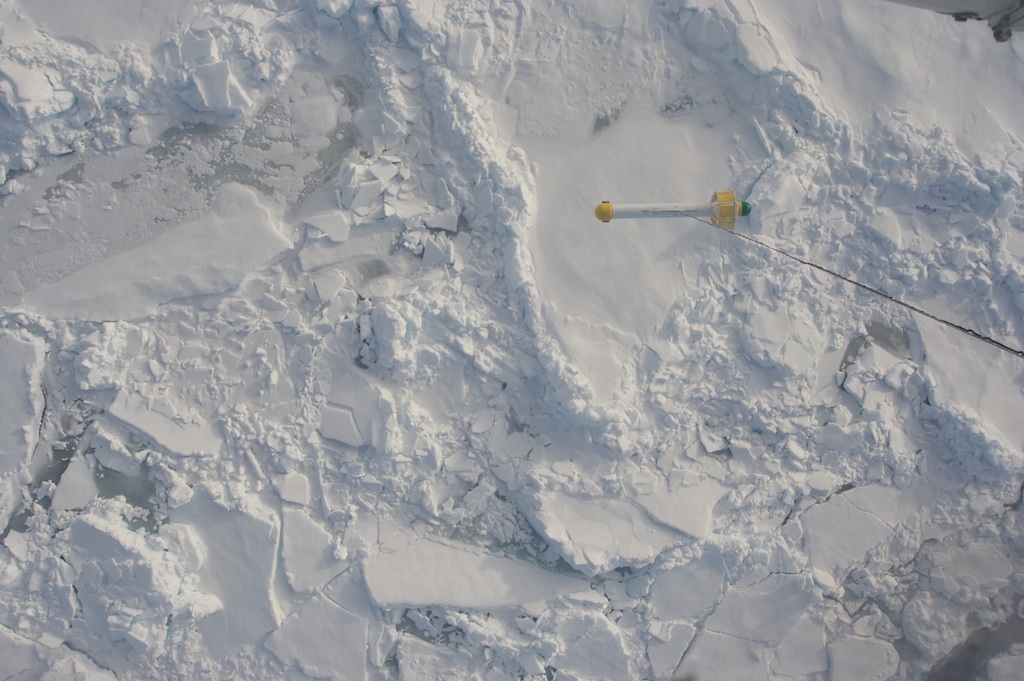
My first proper science cruise in 2005 went to Fram Strait, the region between Greenland and Svalbard. I learned how to measure sea ice thickness the hard way: drilling holes. And more holes. And even more holes. Or the slightly-less-hard way: carry an instrument around that uses electromagnetic induction to measure ice thickness (since sea ice is much less salty than sea water and therefore much less conductive). This instrument is called ”EM31” and we kept joking that the number comes from its weight in kilograms…. So, using drills and the EM31 we measured on as many ice floes as we could and given that the cruise went all the way across Fram Strait, that gave as quite a few datapoints covering quite a large area.

These measurements have been done by the sea ice group at the Norwegian Polar Institute every summer since 2003, and in some years also in spring. It takes dedication to build such a time series! When we could, we also used an airborne version of the EM31, the EM-bird, to do surveys over larger areas. Now, finally, the results of all these measurement have been processed, and analysed – and what do we see? The sea ice in Fram Strait is thinning a lot. Depending which measure you use (nothing about sea ice thickness is straight forward…), the ice has thinned by more than 50% over the 10 years from 2003 to 2012!
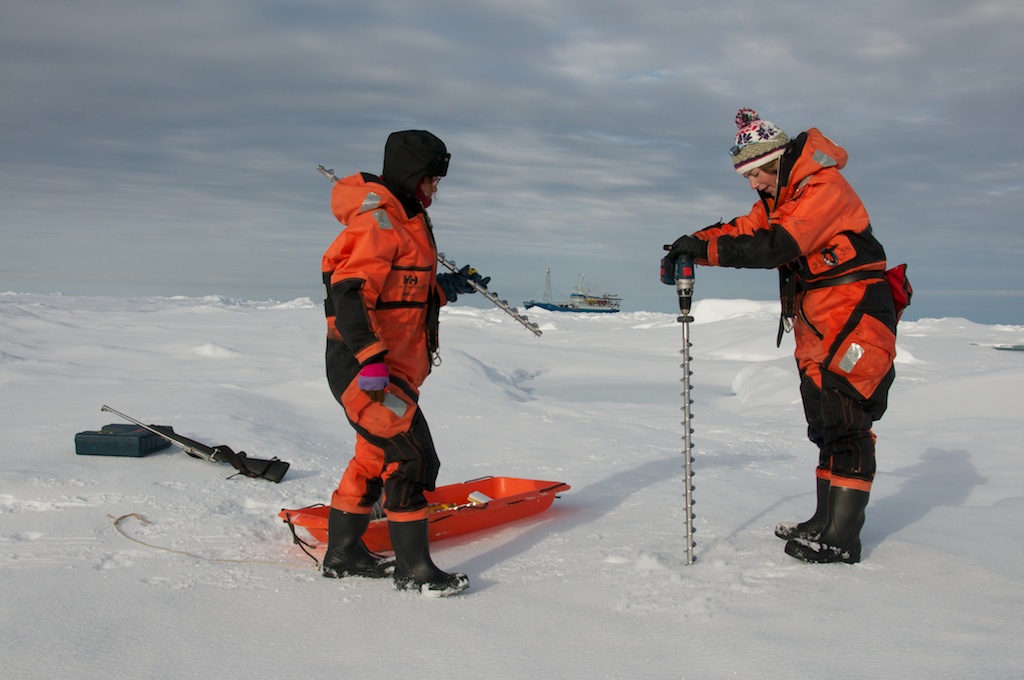
It’s one thing to know that it has thinned, but it’s a lot more interesting to find out why. Fram Strait is a special place: Most of the sea ice that is formed somewhere in the Arctic Ocean (and doesn’t melt there again) leaves the Arctic through Fram Strait. It is a very dynamic region with strong currents and winds, which results in a lot of deformed ice regardless of its age. The extent of the ice cover here is not necessarily linked to the development of the ice in the Arctic Basin – most prominent example was the heavy ice year in Fram Strait 2007 whereas this was up to then the year with the lowest Arctic-wide ice extent in the satellite era.
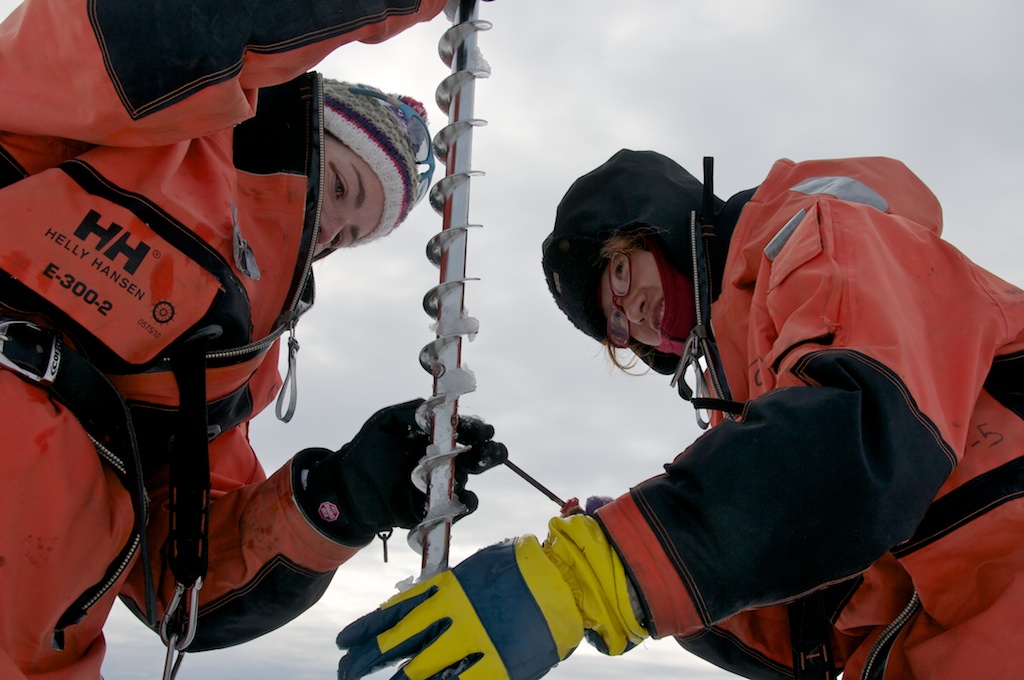
We looked in more detail at where the ice came from and found that this, too, does not correlate with our thickness time series. While the source region of the ice varied from year to year, it was continuously thinning – in our opinion a sign that the thinning occurs Arctic-wide.
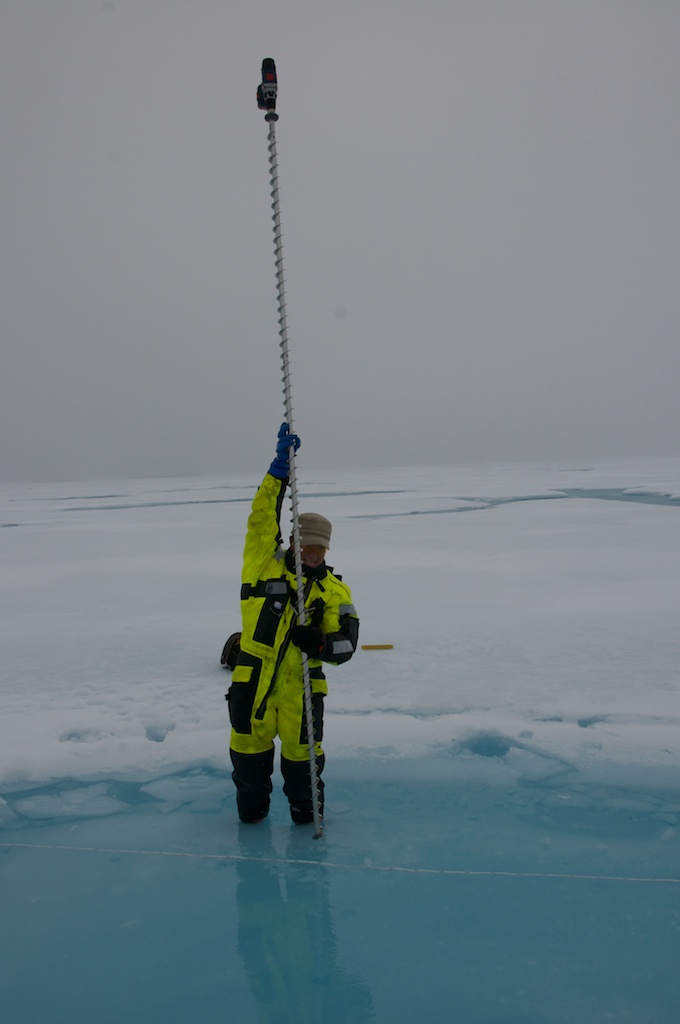
A lot of effort went into this paper and the dataset behind it, and I was very very lucky that I got the opportunity to participate in several of the cruises, do the data analysis and write the paper. It’s even more satisfying to see your work published when you know how much work drilling all those holes was……
